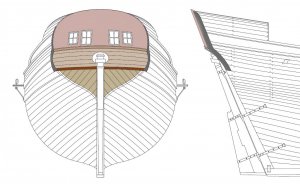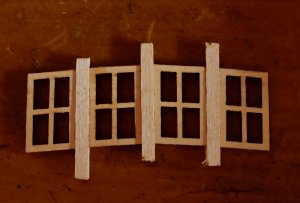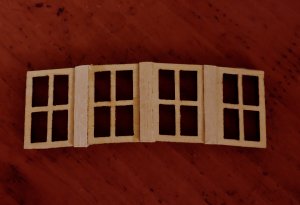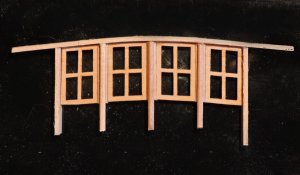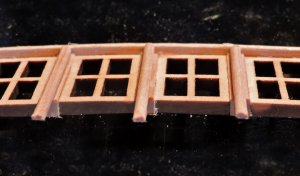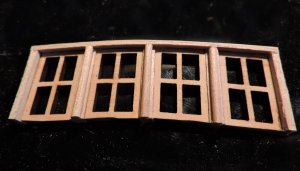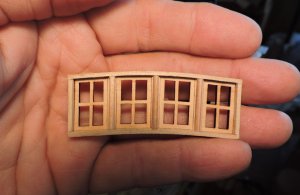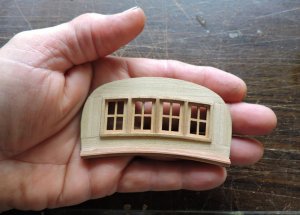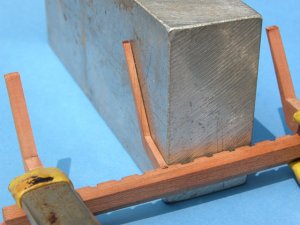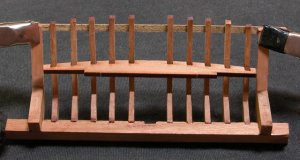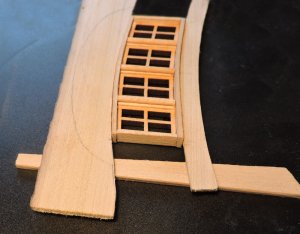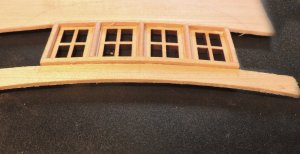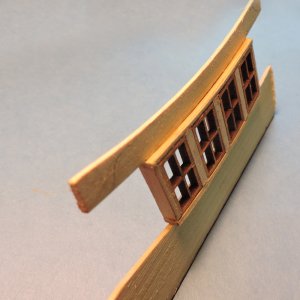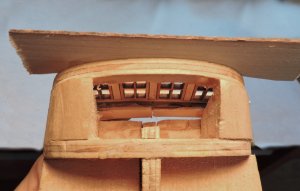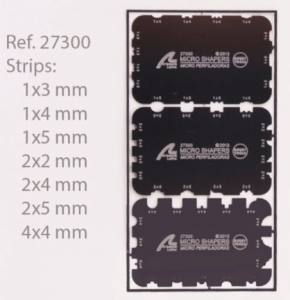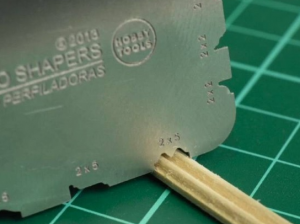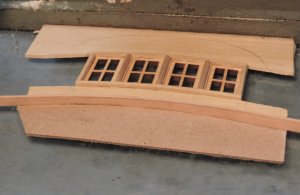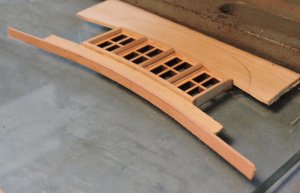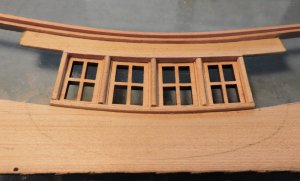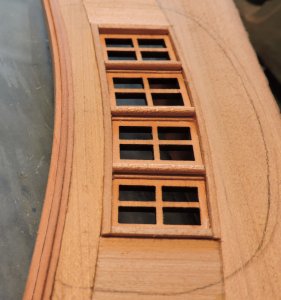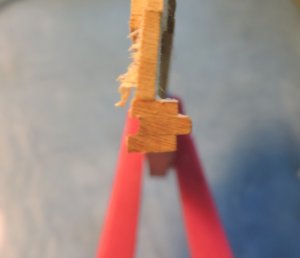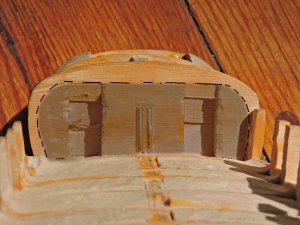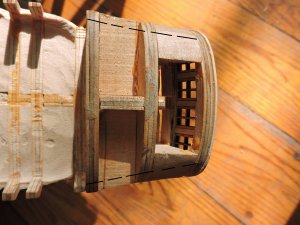Dave, How do you determine where to place the tape or wood battens, the last one I tried the bow planks were like tooth picks I lined it off for 2 baqnds since it was a small ship, and I followed the natural curve of the ship, I am determined to understand the planking process as to me that makes the model a success or not, I do not TRUST MY EYE TO DETERMINE the shape would rather do it by math if possible, the problem with the spiling for me is holding the piece so I can run my compass, I am trying to remeber a way that I did this a long time ago, where I marked out the piece with dots at each STATION line (bulkhead) then take the piece off use a ships curve to conect the dots and then transfer that to the finished wood plank, HOPE I AM NOT CLUTTERING YOUR THREAD, if so just let me know. Don






